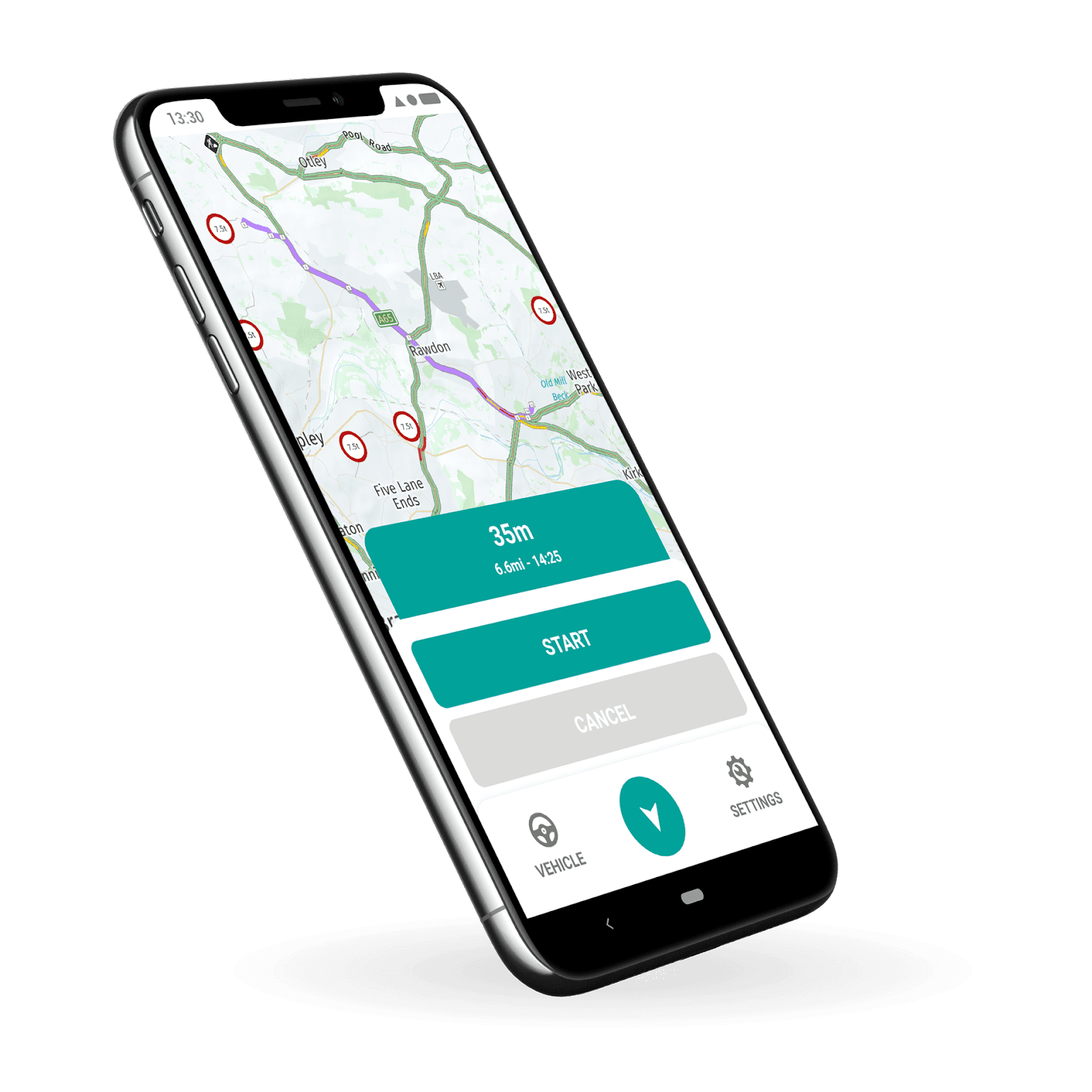A Freedom of Information request submitted by Stream to Network Rail has revealed a series of noteworthy statistics associated with bridge strikes across the UK.
A bridge strike is defined as an incident in which a vehicle, its load, or equipment collides with a bridge. Most of these incidents occur where roads pass under railway bridges, hence why Network Rail manages these incidents.
The statistics highlight the continued prevalence of bridge strikes, the areas in the UK in which they are most frequently occurring, and the extent of the financial damage caused by them.
After every incident, the bridge needs to be examined to make sure the overall structure is safe enough for trains to pass over and vehicles to pass through. Any debris needs to be safely cleared, causing significant delays to both road and rail users.
In worst-case scenarios, the consequences of bridge strikes can range in severity, from serious injuries to fatalities. They can have a serious long-term impact.
Bridge strikes and the subsequent fallout from them are mostly avoidable, so we’re going to highlight the best practices and advice drivers should follow in order to ensure that they decrease the likelihood of one occurring, while also pinpointing how technology can help in this regard too.
The continued prevalence of bridge strikes
Network Rail disclosed that 1,572 bridge strikes were reported across the railway network in the UK from April 2022 to March 2023.
Prior to this, in the financial year 2021 to 2022, Network Rail recorded 1,833 bridge strikes, up from the previous period’s count of 1,624. These strikes cost almost £12M to the taxpayer, and forced weeks of closures.
Below is a graph representing bridge strike figures annually, split between rail over road (underline), and road over rail bridges (overline), against HGV vehicle miles. It shows that whilst there has been some improvement in bridge strike numbers, there is still a long way to go to decrease their prevalence by a significant amount.

On an average day, the drivers of at least five heavy goods vehicles and/or buses put themselves, road users, and the public travelling on the trains at risk.
Research conducted by Network Rail found that 32% of drivers admitted to setting off while not being aware of the height of their vehicle, with 56% not considering low bridges when planning their journey.
These statistics offer some insight into the reasons why bridge strikes are occurring due to drivers not doing their due diligence before embarking on a journey. It’s therefore unsurprising that bridge strikers are one of the most common HGV accidents in the UK.
The financial impact of bridge strikes
Their lack of due diligence comes at a cost too.
Most of the vehicles that hit railway bridges are either HGVs or buses, which incur costs of around £13,000 per strike, and this is passed on to the UK taxpayer, costing around £23m a year.
There have even been instances where a single bridge strike has cost millions of pounds to repair. An A12 bridge strike in Essex that occurred in 2020 has required a ‘complex’ repair procedure that will take up to five years to fix, costing Network Rail £2.5m.
Two of the bridge’s beams were damaged as a result of an impact from an excavator being carried on the back of a flatbed truck driving beneath.
Network Rail disclosed that they are yet to calculate the total financial impact of bridge strikes for the financial year spanning from 2021 to 2022 and beyond, mainly due to the Covid-19 pandemic and the reduced passenger numbers over this period.
Network Rail has reiterated that drivers have to be cautious and follow the correct guidance at all times (which is outlined in the next section of this article).
“We know that most drivers are complete professionals and take safety on the road very seriously. However, we know there are also some areas where we could be better across the industry to stop strikes happening and give drivers and logistics companies the tools they need to help tackle the problem more effectively.
Bridge strikes impact the whole transport network, and by working together, we can provide the right training and education for logistics companies to help them support their drivers, ensure that those who do break the rules are penalised, and lower the impact of strikes on the travelling public when they do happen.” – Network Rail.
Where bridge strikes are most common in the UK
The question remains then: where in the UK are these strikes most commonly occurring?
Network Rail disclosed which bridges are in the top ten for strikes in the UK from 2022 to 2023, which they have dubbed the ‘big hitters’.
| # | Bridge ID | Route | Location | Total Strikes 2022/2023 |
| 1 | 1816 | ANG | Stonea | 19 |
| 2 | 265 | ANG | Needham Market | 18 |
| 3 | 337 | CEN | Wimbledon | 16 |
| 4 | 47150 | WEX | Penistone | 15 |
| 5 | 60 | N&E | Hinckley | 14 |
| 6 | 3 | WCS | Brockley Lane | 11 |
| 7 | 494 | KNT | Ely | 11 |
| 8 | 1568 | ANG | Great Chesterford | 11 |
| 9 | 1530 | ANG | Thetford | 11 |
| 10 | 1601 | ANG | Grantham | 9 |
The number of bridge strikes over the same period but for the previous year has also been collectively grouped by region, giving an indication as to which regions in the UK they more commonly occurring:
| Regions | No. of bridge strikes 2021/2022 |
| Southern | 541 |
| Eastern | 421 |
| Scotland | 412 |
| Northwest & Central | 280 |
| Wales & Western | 153 |
Complaints from villages regarding HGVs passing through
National Rail received a total of 22 calls through their National Helpline in 2022/23 related to HGVs
passing through villages (possibly where they are banned from doing so), of which only four are complaints – the remainder of calls are “Work Request” or “Information Request” to advise them of various issues.
How to avoid bridge strikes
There’s an abundance of guidance on the best practices to follow in order to ensure that drivers educate themselves so that they take all of the correct precautions to avoid accidentally colliding with a bridge and incurring these costs.
We’ve summarised the key bits of information from this guidance.

The overall consensus across the various official guidance offered by Network Rail, as well as Highways England, and the Driving Vehicles Standards Agency (DVSA), is that a driver is responsible for knowing prior to the journey:
- The vehicle’s height and width
- The route they should take
- How to correctly obey traffic signs
Before commencing a journey they should check:
- The security and safety of the load
- The height of the cab
- The height of the trailer, its load and equipment
- That the correct maximum height is displayed in the cab
- The maximum vehicle width
- The route that they are taking
While on the journey:
- Check the route and guidance on any new routes being taken
- Obey height restriction signs
- Be aware of your surroundings
- Report any damages
Drivers should not rely on the information on the headboard, as coupler heights can vary, and report any discrepancy between the measured height and the height shown on the headboard to their Transport Manager.
It is an offence if the overall travelling height of a vehicle is over 3 metres and the correct maximum height is not displayed in the cab. The maximum fine for being stopped without a height indicator in the cab is a £30 fixed penalty fine for the driver.
Drivers also need to be cognisant that the height of their vehicle can change for a variety of reasons; through adjustment of the 5th wheel, with the trailer loaded, unloaded, or reloaded.
All variables must be taken into consideration to avoid any potential bridge strikes.
The guidance strongly recommends that drivers invest in a HGV and truck sat nav app, such as Turn GPS, in order to provide safe, in order to provide safe (as well as compliant) navigation for drivers, and to stop vehicles from being directed down unsuitable routes.

Systems like Turn have been specifically designed for these vehicle types, so drivers shouldn’t rely on typical routing systems, such as Google Maps, Waze and Apple Maps, which do not support different vehicle types and commercial vehicle settings.
These systems will not direct the driver down routes that avoid low bridges and consequent bridge strikes, so commercial vehicle-specific GPS systems are advised.
Satellite navigation systems come with the added benefit of providing real-time route updates, so other factors such as traffic are taken into account to ensure the vehicle gets from point A to point B as efficiently and safely as possible, so there are numerous benefits to investing in one for professional drivers.
For more information on the subject of bridge strikers, here’s a selection of guides that offer preventative measures for professional HGV drivers, coach drivers, and Transport Managers.
They educate on how to prevent vehicles from hitting bridges, as well as what to do if a bridge strike happens, so they are essential reading.
Prevention of bridge strikes: a good practice guide for professional drivers
Prevention of bridge strikes: a good practice guide for professional drivers of passenger vehicles
Prevention of bridge strikes: a good practice guide for transport managers
Looking for a sat nav app for HGVs, trucks or vans?
Book a demo of Turn with one of our experts to learn how the application delivers safe and efficient navigation based on the specific commercial vehicle being used.
Frequently Asked Questions
Most of the vehicles that hit railway bridges are either HGVs or buses, which incur costs of around £13,000 per strike, and this is passed on to the UK taxpayer, costing around £23m a year.
In the financial year 2021/2022, Southern regions of the UK saw the most bridge strikes (541), followed by Eastern regions (421), Scotland (412), Northwest u0026 Central (280) and Wales and Western regions (153).
In the financial year 2023/2024, the top 5 bridges that were struck are: bridge 1816 in Stonea, bridge 265 in Needham Market, bridge 337 in Berkswell, bridge 47150 in Wimbledon, and bridge 60 in Penistone.








